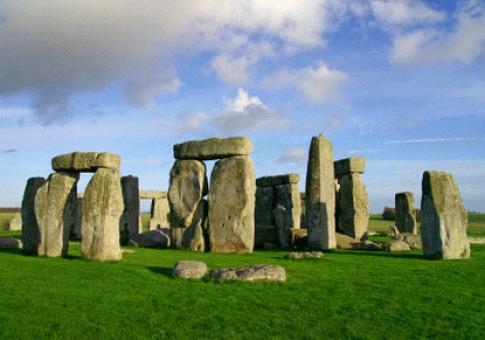Latest News
Was Stonehenege built for sound effects?

The origins of Stonehenge have long baffled historians - was it intended as a monument for the dead, a celestial observatory, a place or healing?
By Nick Collins, Science Correspondent, in Vancouver
But now a US researcher has come up with an intriguing new theory, claiming that the ancient stones were actually arranged to create a special sound effect.
Steven Waller said the ordering of stones at the rock monument in Wiltshire could be an attempt to recreate a sound illusion known as an "interference pattern" during prehistoric pipe-playing rituals.
The effect happens when two sounds clash, and results in some people hearing a louder noise and some a softer noise, depending on where they stand in relation to the source.
People taking part in a ritual dance around a pair of pipers would have heard the music unexpectedly grow quieter as they moved past certain spots due to this natural phenomenon, Mr Waller said.
This would have created the illusion that the sound was intermittently being muffled by invisible obstacles as the dancers circled the pipers, he said.
Speaking at the American Association for the Advancement of Science (AAAS) annual meeting in Vancouver on Thursday, Mr Waller, an independent California-based researcher, said it could be a desire to recreate this natural phenomenon that provided the “blueprint” for the stone circle.
Although it remains a puzzle why our ancestors built Stonehenge, the theory contradicts the most widely accepted assertion that the arrangement of the pillars is related to the positioning of the Sun at the equinoxes.
When sound waves clash they either reinforce each other, making the noise louder, or cancel each other out, depending on the exact point at which the waves meet.
If two sound sources are positioned near one another, they will sound noticeably louder from some angles but quieter from others.
Mr Waller said: “Ancient people had myths about echos being spirits in rock. If they heard interference patterns, that would have been a mysterious thing they would have been unable to explain.
“I think they were experiencing this illusion, thinking it was magic pillars, and then constructed the actual structure.”
Mr Waller tested his theory by blindfolding three school pupils and moving them in a circle around a pair of pipes each playing the same note.
When asked to draw the field they had been in, most students sketched a series of pillars which they imagined had been responsible for blocking the sound at certain points, and which resembled the layout of Stonehenge.
Three blindfolded University of California students who took part in a similar test also believed that obstacles had been responsible for blocking the sound.
Mr Waller said: “It is unlikely this relationship is merely coincidental, because a number of megaliths are named ‘Pipers Stones’.
"There is a legend that two magic pipers led maidens into a field and enticed them to dance to music in a circle. And the pipers all turned to stone."
Mike Pitts, editor of British Archaeology and a leading expert on Stonehenge, said researchers had established that the stone circle was built over several centuries and “Wasn't thought up overnight”.
He said: “There is no question it's main axis is aligned along the mid-summer sunrise and mid-winter sunset and there is widespread agreement that it was used for cremation burials.
“However, I don't think you'll find many archaeologists who know about Stonehenge giving this particular acoustic theory a lot of time."
Rate this article




 del.icio.us
del.icio.us Digg
Digg

Post your comment